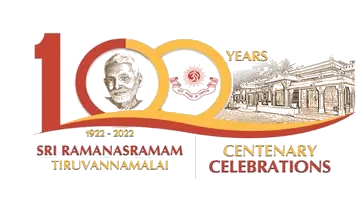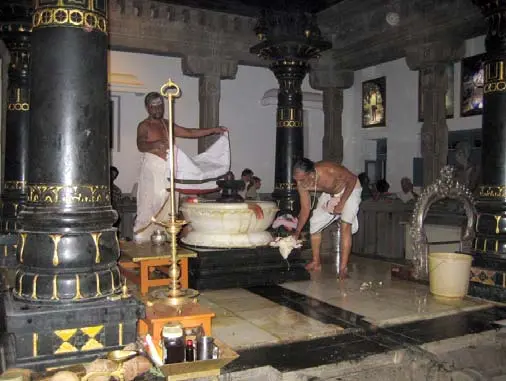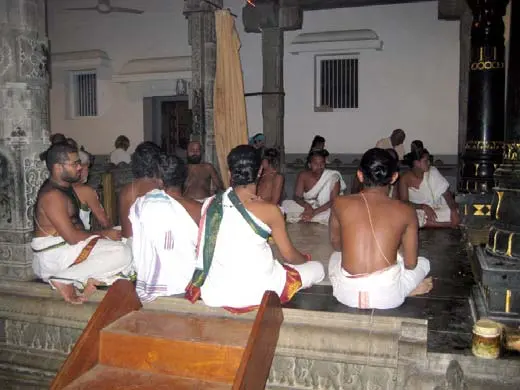Inside this issue
The Kingdom of God – Garland of Guru's Sayings
The Teaching in Silence
Report – Sivaratri
Conducting a Ramana Satsang Inner Path – Giripradakshina







Dear Devotees,
With Sri Bhagavan’s Grace we are pleased to publish an eNewsletter from Sri Ramanasramam’s website. The purpose is to bring together devotees of Sri Bhagavan from across the world.
Saranagathi, a monthly eNewsletter, is being developed to help devotees share their experiences, about satsangh, meetings and other events that are held within various centers of Bhagavan Sri Ramana Maharshi around the world.
It is proposed to have one feature article for each issue. The feature article would focus on events that happened during the years between 1879 and 1950 as captured in popular books like Talks with Sri Ramana Maharshi, Letters from Sri Ramanasramam and others, which are available for download from the ashram website.
Our earnest request, to all devotees, satsangh groups and centers is to share with us their events, stories and experiences. Please email them to saranagathi @ sriramanamaharshi.org
Ever Truly In Sri Bhagavan,
President, Sri Ramanansramam.
The Teaching in Silence
It was a Sivaratri Day. The evening worships at the Mother's shrine were over. The devotees had their dinner with Sri Bhagavan, who was now on His seat, the devotees at His feet sitting around Him.
At 8 p.m. one of the Sadhus stood up, did pranam (offered obeisance), and with folded hands prayed: "Today is the Sivaratri Day; we should be highly blessed by Sri Bhagavan expounding to us the meaning of the Hymn to Dakshinamurti (stotra)." Says Bhagavan: "Yes, sit down."
The Sadhu sat, and all eagerly looked at Sri Bhagavan and Sri Bhagavan looked at them. Sri Bhagavan sat and sat in His usual pose, no, poise. No words, no movement, and all was stillness! He sat still, and all sat still, waiting. The clock went on striking, nine, ten, eleven, twelve, one, two and three. Sri Bhagavan sat and they sat. Stillness, calmness, motionlessness - not conscious of the body, of space or time.
Thus eight hours were passed in Peace, in Silence, in Being, as It is. Thus was the Divine Reality taught through the speech of Silence by Bhagavan Sri Ramana Dakshinamurthi.
At the stroke of 4am Sri Bhagavan quietly said: "And now have you known the essence of the Dakshinamurthi Hymn". All the devotees stood and made pranam to the holy Form of the Guru in the ecstasy of their Being.
Conducting a Ramana Satsang
Ramana Satsang’s are observed by like-minded devotees across the world, and below is an attempt to describe the usual program across North America. These are usually conducted bi- weekly or monthly by a group of devotees living within travelling ‘radius’, either at a devotee’s home or at a temple, equidistant to many.
The 1 1⁄2 to 2 hour program starts off with chanting of Sri Bhagavan's works, namely the popular and enchanting
- 'Aksharamanamalai’
 followed by
‘Upadesa Saram’
followed by
‘Upadesa Saram’
 ,
,
- 'Ramana Satguru and/or
- ‘Arunachala Pancharatnam’
 ,
to delve on Maharshi’s teachings.
,
to delve on Maharshi’s teachings.
Reading from Bhagavan books is also a clear favorite for many devotees. Some groups choose to read any of the Ashram publications from cover to cover over the course of several satsangs or sometimes they prefer to read excerpts from books like ‘Talks with Sri Ramana Maharshi’ or ‘Letters from Sri Ramanasramam’. It is strongly felt that reading is an ideal tool to reminisce about the life of Sri Bhagavan, His devotees, His ashram and enjoy the “naturalness of Bhagavan which was as striking as His grandeur”.
A short period of meditation is usually followed by reading about Bhagavan’s teachings from books like ‘Maharshi’s Gospel’ or ‘Who Am I?’.
Some satsang groups conduct a short program for children called ‘Bala Ramana’ while the adults meditate and read. The children listen to stories about Bhagavan’s life and also learn short songs or slokas. This is followed by arati and a potluck lunch/dinner ‘prasad’.







Inner Path – Giri Pradakshina
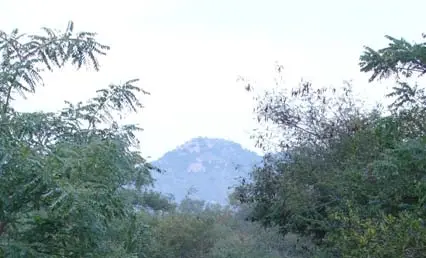
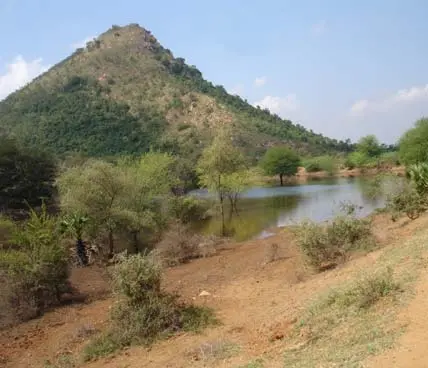
The purpose of this article is to explain to devotees how to follow a route for Pradakshina on the Inner Path that avoids going through downtown Tiruvannamalai in the last 1/3 of the route. The traditional route for the Inner Path normally joins up with the Outer Path about 2/3 of the way through and immerses one in the hustle and bustle of town, which I find is often an unpleasantly jarring contrast to the peaceful, natural setting of the Inner Path up to that point. Instead of going through the business district of town in the final leg of the route, this route takes you through the Pavala Kundru (Coral Hills) residential neighborhood on the slope of Arunachala.
I find that the generally more peaceful environment and welcoming, cheerful attitude of the residents of Pavala Kundru makes the experience of Pradakshina considerably more pleasant, and makes it easier to maintain the momentum of stillness generated by the Inner Path up to that point. This way of doing Pradakshina really lives up to the name “Inner Path”, both physically and spiritually. It has the added bonus of taking you through Virupaksha Cave and Skandashram – a fitting finale to the intimate communion with Arunachala that is experienced through the Inner Path.
please view the full descrition on the walking'round th'hill web-page.
Publisher: V.S.Ramanan
Editorial Team: Ranjani Ramanan, Prashanth Visweswaran, Ravi Ramanan
Email: saranagati@gururamana.org

